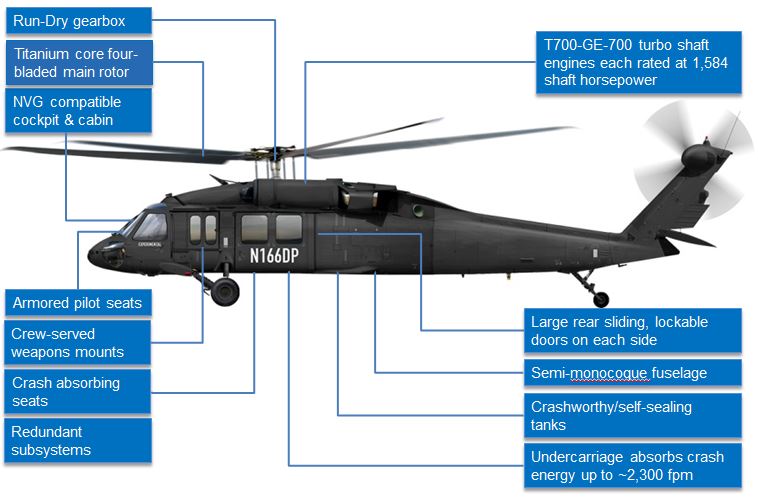Navigating Uh 60 Helicopter Regulations and Compliance Requirements

Regulatory Framework Introduction
The regulative structure controling UH-60 helicopter operations incorporates a complex collection of standards and guidelines developed by aeronautics authorities. These regulations are created to make certain the safe and effective procedure of UH-60 helicopters in various settings. The Federal Air Travel Management (FAA) plays a main role in establishing and enforcing these policies, which cover a vast array of functional elements, consisting of airworthiness criteria, pilot qualifications, maintenance requirements, and operational procedures.
Conformity with these regulations is crucial for helicopter operators to preserve the highest possible degrees of safety and security and functional integrity. Failure to abide by these guidelines can cause serious effects, consisting of accidents, injuries, and governing sanctions. Helicopter operators must stay educated about the most recent regulative advancements and make certain that their procedures are in full compliance with all relevant regulations and criteria.
Airworthiness Inspections and regulations
Among the governing framework regulating UH-60 helicopter procedures, an important emphasis lies on conformity with Airworthiness Directives and performing extensive inspections to maintain security requirements and functional integrity. Airworthiness Regulations (Advertisements) are released by air travel authorities to resolve unsafe problems in airplane, consisting of the UH-60 helicopter, and mandate details actions to be taken by proprietors or drivers. Compliance with ADs is obligatory, and failing to stick to these regulations can result in severe repercussions, consisting of grounding of the aircraft.
Normal inspections are paramount to making certain the airworthiness of UH-60 helicopters. By sticking to a strict examination regimen, operators can find and resolve possible problems without delay, therefore improving the safety and reliability of UH-60 helicopter operations.
Pilot Certifications and Training

Pilot training for UH-60 helicopters is thorough and covers a wide array of topics, including airplane systems, emergency situation procedures, navigation, and mission-specific training. Additionally, pilots go through simulator training to practice various emergency situation situations in a regulated atmosphere. This training aids pilots develop the needed skills to handle tough situations effectively.


Moreover, recurring training and professional growth are crucial for UH-60 pilots to remain current with the current policies, innovation, and finest practices. By buying pilot certifications and click here to read training, operators can improve security, enhance performance, and make certain conformity with governing demands in the operation of UH-60 helicopters.
Functional Limitations and Needs
Pilot credentials and training offer as the structure for comprehending the operational restrictions and demands linked with UH-60 helicopter procedures (uh 60). These operational constraints are established to make certain the security of the staff, travelers, and the airplane itself. Operational constraints may consist of variables such as weather condition conditions, weight restrictions, altitude restrictions, and functional boundaries. It is crucial for pilots to be skilled in these constraints to make educated decisions during trip operations. Furthermore, conformity demands, such as sticking to particular flight courses, communication protocols, and emergency situation treatments, are crucial for maintaining operational safety and governing compliance. Pilots need to remain current with all operational restrictions and needs via regular training, instructions, and evaluates to minimize risks and make sure safe and reliable UH-60 helicopter procedures. By prioritizing adherence to these operational standards, pilots can enhance the general safety and performance of their goals while upholding regulative criteria.
Emergency Procedures and Conformity Testing
Efficient emergency treatments and extensive conformity testing are important parts of keeping operational security and regulative adherence in UH-60 helicopter procedures. Emergency treatments incorporate protocols for different scenarios, including engine failures, fires, hydraulic concerns, and much more. Pilots and crew members should be well-versed in these procedures to react swiftly and properly in emergency situations. Routine conformity screening makes certain that the helicopter fulfills all regulative demands stated by aviation authorities. This testing involves detailed assessments, checks, and analyses to validate that the aircraft is airworthy and in compliance with all applicable laws.
In addition, compliance testing may include simulations of emergency scenarios to examine the staff's feedback and the helicopter's efficiency under stress and anxiety. By prioritizing emergency treatments and compliance screening, why not look here UH-60 drivers can minimize threats and demonstrate their commitment to security and governing conformity.
Conclusion
To conclude, adherence to regulatory structure, compliance with airworthiness instructions, pilot certifications and training, functional constraints, and emergency treatments are vital for browsing the guidelines and needs of operating a UH-60 helicopter. uh 60. It is vital for operators to focus on safety and ensure full conformity with all relevant policies to preserve the airworthiness and functional integrity of the airplane
Browsing the governing landscape surrounding UH-60 helicopter operations demands a nuanced understanding of the elaborate web of regulations and compliance demands.Conformity with these regulations is important for helicopter drivers to maintain the greatest levels of safety and operational integrity.Among the governing structure governing visit this web-site UH-60 helicopter operations, a critical focus lies on conformity with Airworthiness Directives and performing detailed evaluations to promote safety standards and operational integrity.Reliable emergency situation treatments and extensive conformity screening are important parts of keeping operational safety and regulatory adherence in UH-60 helicopter procedures. Routine conformity testing guarantees that the helicopter meets all regulatory requirements established forth by air travel authorities.